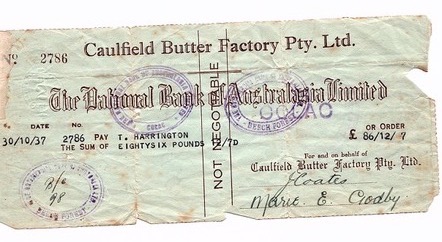Dairy farming in Johanna, the end of an era.
……..or maybe not….
When the truck loaded with the last of our dairy herd drove away at Christmas in 2018 we thought that dairying at Johanna was finished, but read on…
To the Gadabanud people, the isolated Johanna River valley was a special place but it didn’t look like it does today. It was wooded with tall eucalypts and shady fern gullies. The area was only opened up for selection as agricultural land as recently as the late 1800s. Back then, there were no roads into the valley from inland, only a rough cart track along the cliff top. Prospective settlers bought their land unseen. They chose where they were to farm from a map spread across a desk in the Land’s Department’s office in Melbourne. Some never came to settle on their chosen allotments or when they got here the land wasn’t where they expected it to be.
Eventually though, as the inland roads improved, settlers had cleared small pockets of land and small dairy herds were bred up. By the early twentieth century there were many small family farms. Milk was converted into cheese and cream as they were more easily transported. There were even a couple of very productive family cheese factories in the Johanna valley. Hand turned separators separated the cream from the milk and after being placed in metal cream cans it was taken by horse and sled to the train at Lavers Hill and then to the Colac Dairy Factory.
Later, when roads were improved, the cream cans were collected from the farms by Cunningham’s transport. There were at least thirty small dairy farms around the area. The bush was slowly being cleared by hand. Later, bulldozers cleared the remains into piles or windrows to be burned. Not much of each farm was fenced and the cows were identified by brands. One landowner had a simple, foolproof method of identifying his herd – he cut one horn off and left the other fully grown.
With the arrival of electricity to the area in the 1960’s, refrigerated milk vats were introduced so the milk could be stored longer. Refrigerated tankers were also introduced to transport the milk for processing. There was little choice of dairy companies to supply and all milk went to the CDC [Colac Dairy Company]. This was a co-operative owned by the farmers themselves. There was plenty of work available on dairy farms and most farms employed workers or had a large family workforce.
The Harrington family had owned a store [where The Blackwood Gully/ Aussie Stop is today] and a hotel at Lavers Hill but in the late 1920s they swapped the store for a farm `-Gleneden. Gleneden was originally selected by the Hampshire family. They had brought their supplies to Johanna by boat and settled on the river flats. At various times they were flooded and burned out.
Some things were still the same one hundred years later – the south westerly winter gales blowing the rain sideways, the hot northerlies, bushfires and floods. The herd had to be milked regardless. I have a lasting memory of floods that came up quickly, the cows patiently picking their way to the dairy through water up to their shoulders, and a dedicated border collie doggedly swimming behind them.
There are many positives to dairying. Farming life is a good way for families to be together, to teach children a work ethic and the Johanna landscape is just glorious. On a mild summer evening or quiet early morning it’s the best job in the world.
There are times however, when dairying stretches farmers to the limit. During the depression, the monthly milk cheque of eighty –six pounds [a massive amount at that time] was taken to the Beech Forest bank to be cashed. It wasn’t honoured and there was no pay at all that month. The original cheque has been kept all that time as a reminder of how fickle the farming business can be. [see photo below]
Again, during the 1960s, the dairy market failed. Cattle were unsaleable and some herds were shot and buried. At this stage many dairy farmers sold their farms to neighbours or to the pine plantation companies.
In the past decade or so the small family farms of the Otways are no longer as profitable. Johanna’s topography is not physically suited for expanding to larger farms and many farmers have retired. Dairy Companies are once again troubled. At one stage our milk was being transported each day to Koroit!
With the extension of the Great Ocean Road from Apollo Bay in the early 1980s tourism has grown and grown. People from out of the area have purchased the farms as life style properties and weekenders.
After five generations of dairying the Harrington family had had their fill. The neighbours and campers are no longer woken by early morning calling for the cows, revving motor bikes, barking dogs and the shuffling of the cows as they patiently form an orderly queue to be milked.
Last year [after 90 years as a family farm] we thought we were to be the last of the dairy farmers in Johanna. It was sad and seemed a shame. The Johanna valley grows beautiful pasture and the rainfall is reliable – it makes good milk.
But, there are always surprises around the corner!
The valley’s newest dairy is now taking shape and we wish Katrina, Geoff and the next generation Claire, all the best with their sheep dairy!
Sue Harrington

